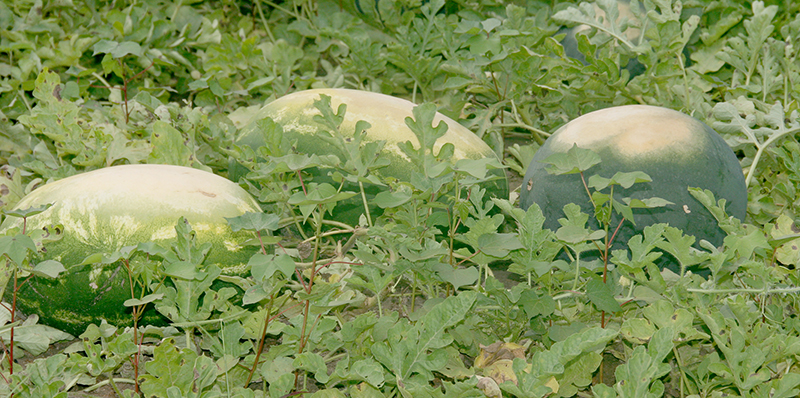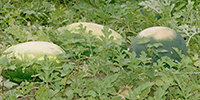Even with the welcomed rain Georgia farmers experienced this week, sunscalding on certain fruits and vegetables remains a concern as producers continue with this year’s harvest, according to University of Georgia Cooperative Extension vegetable specialist Andre da Silva.
When temperatures are high and the sun is able to shine for weeks at a time with very little cloud cover, which had been the case in mid-to-late May, certain crops are vulnerable to developing sunburnt conditions — notably watermelons, tomatoes and bell peppers.
“The sun has definitely been too aggressive for some of our vegetable crops, especially with bell pepper, tomato, and watermelon. Growers have been asking for products to protect their crop from the sun,” da Silva said. “Unfortunately, there is not much research on this topic for us to make a recommendation. However, the first UGA research trial is being conducted this season.”
Watermelons are most susceptible to sun damage if they endure a prolonged dry period. Without moisture, the vines will begin to wilt and the fruit will be more exposed to the sun. When watermelons burn, the rind will appear yellow, rendering the crop unmarketable.
“Growers that need to exercise the most precaution are the watermelon growers who are using plastic mulch with overhead water application. If they haven’t been applying enough water, they will see their plants shrink. It’s hard for the root systems of those plants to get the water that the growers are applying,” da Silva said.
If watermelon producers can protect their crop from the sun, they’ll extend their harvest window into late June and around July 4 when watermelons are at peak demand and prices for farmers are at their best.
“We don’t expect temperatures to get this hot, this early,” da Silva said. “We need a little bit of rain every day with a little bit more clouds to avoid future sunburning, and then we’ll have good soil moisture.”
Prior to the June 8 weekend, the last substantial rainfall in south Georgia was during the weekend of May 11. According to the United States Drought Monitor, (www.droughtmonitor.unl.edu) drought conditions are considered moderate, though da Silva believes they’re still likely much worse. Along with fellow UGA vegetable scientists Bhabesh Dutta and Stormy Sparks, da Silva has traveled across south Georgia to survey the damage inflicted by the weekslong drought.
“If growers hadn’t been pumping up their irrigation this spring, they could very easily lose their crop this year,” da Silva said.
Direct contact of fruit to sunlight can cause blossom end rot disorders. Previous research trials from da Silva and colleague Tim Coolong on the UGA Tifton campus showed that fertilizer strategy, mainly those consisting of calcium nitrate, is key to reducing blossom end rot, a calcium-related disorder that affects mostly peppers and tomatoes.
For up to date information about weather events in Georgia, see the UGA Weather Network website at www.georgiaweather.net.








